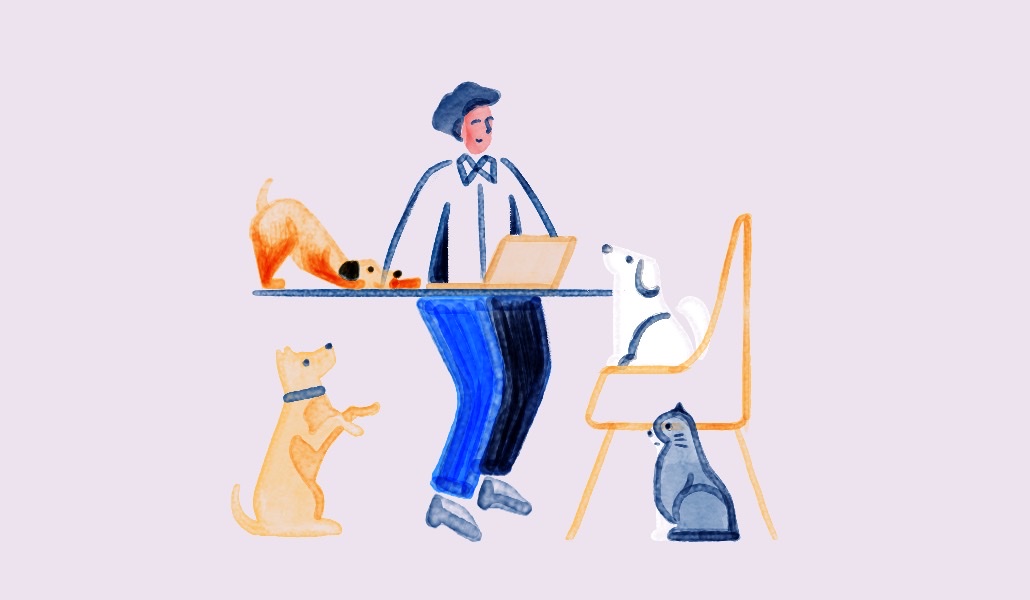Pet insurance rises as a hot new workplace benefit

When young professionals are swapping having kids for having pets, it makes sense that pet insurance would grow in importance. And when an employer can offer it as a perk, that’s even better.
In fact, 51% of employees rank pet insurance among the top benefits that would impact their decision to take a new job. It’s not necessarily a surprise, especially with remote work becoming the norm and 75% of remote workers saying they want to stay home with their pets. According to the American Society for the Prevention of Cruelty to Animals, approximately 23 million households added pets during the pandemic, which pushed pet insurance into one of the top three fastest-growing voluntary benefits. Today, pet owners increasingly consider their pets as part of their families.
“Pet insurance is successful because of the increased bond that exists between pet and owner,” said Alexandre Douzet, CEO of pet insurance provider Pumpkin. “Pets have a more elevated status in the family circle and there’s nothing people won’t do for their pets.”
More employers are recognizing the significant role pets play for their employees and the need to offer them peace of mind regarding their pets’ care.
“Pets have a huge part in people’s lives,” said Michelle Yates, executive vp of business development at PetPartners, Inc. “Today employees consider pets to be a valuable part of their workday because of remote work. People say pets are their new favorite coworker.”
It’s something that benefits multiple generations of workers. On the younger end, it helps workers who choose pet ownership instead of parenthood. USA Today surveyed 1,000 dog owners nationwide and found that 38% of them made the choice to become pet owners instead of having a child. The reasons: Children are expensive, dogs are easier and many young Americans say having children just isn’t something they want right now.
And on the other end of the spectrum are people who are first-time empty nesters who want to have a pet in the house.
“We have five generations in the workforce right now, and people from all generations consider their pets their dependents now,” said Yates. “It makes sense to have it on payroll.”
Either way, it’s the perfect time for employers to step in from a benefits standpoint.
“You would think this benefit is for a niche market or just in the tech industry that you usually see all the coolest stuff, but we see all different size organizations and industries starting to offer pet insurance,” said Yates. “It’s really well received.”
Right now, most employers are offering pet insurance as a voluntary benefit and not contributing to it. However, Yates said she sees a change on the horizon. PetPartners has seen a 20% year-over-year increase in employers who contribute some or all of the cost of pet insurance for their employees.
But Douzet predicted it will still be some time until that becomes a common offering from employers.
“It’s still in the early days,” said Douzet. “Few employers provide coverage, but electing to sign up for the voluntary benefit helps. They might get some sort of discount. In the next five to 10 years, things will change. Led by employees, more companies will provide some or full coverage.”
In the end, it pays off in multiple ways when it comes to attraction and retention. The Human Animal Bond Research Institute Benchmark Survey of Pet Owners found that 87% said they experienced mental health improvements from pet ownership, which ends up carrying over into their work. The survey also found that 132.8 million pet owners in the United States visit a doctor 0.6 times less than average non-pet owners. The average cost of a physician office visit is $139. Pet owners, in this way, were responsible for saving $11.37 billion in U.S. healthcare costs.
Organizations are beginning to realize that adding pet insurance as a benefit will likely help increase employee satisfaction and reduce turnover, and can even be a factor in managing human health costs. Fifty-two percent of employees who work for a pet-friendly company reported in a LiveCareer study that they have a positive working relationship with their supervisor, compared to 14% who work in non-pet friendly workspaces.
“It’s a competitive environment right now to recruit and retain the right talent,” said Yates. “Employees’ demands are high and having a robust benefits package helps.”

